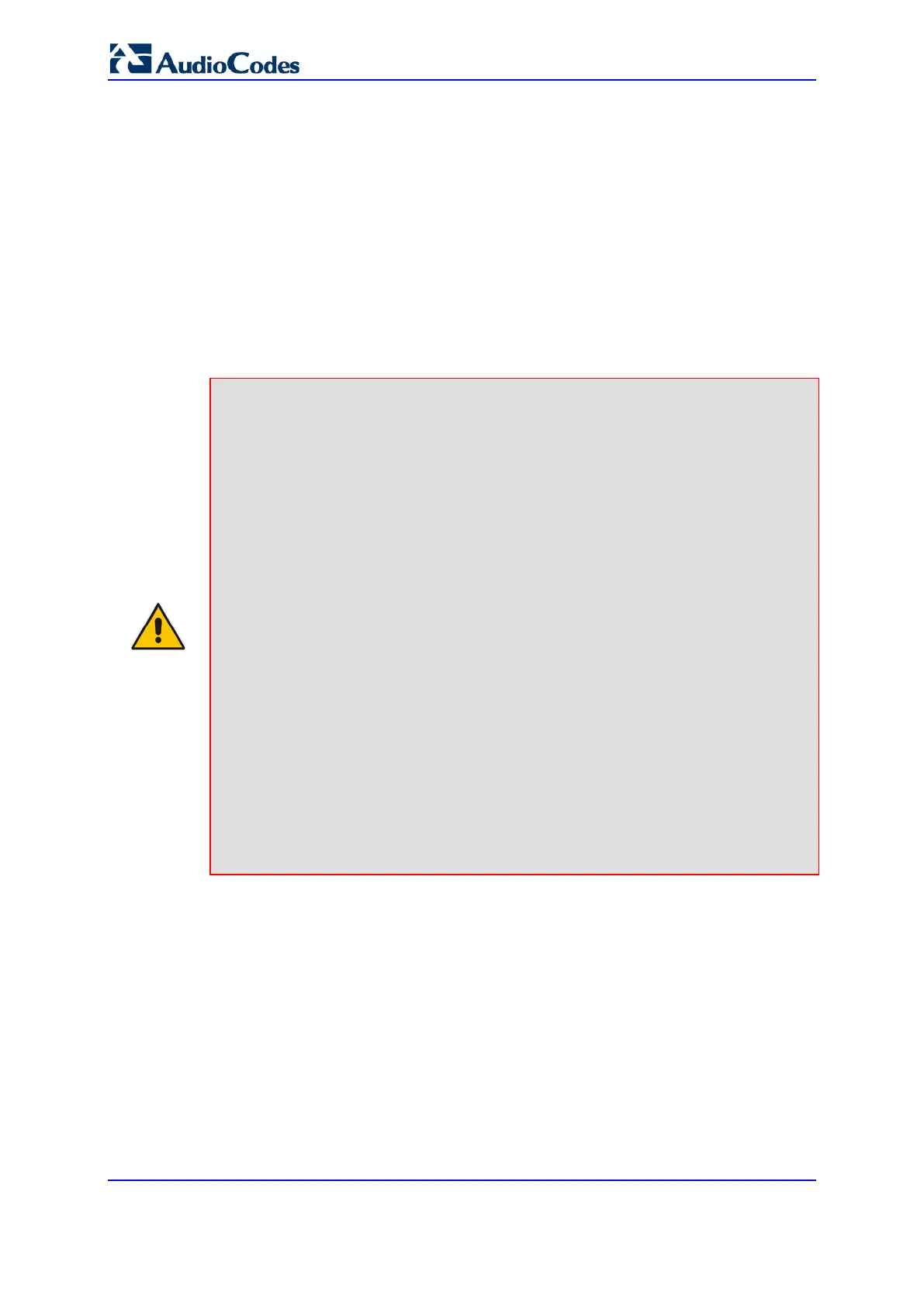User's Manual 662 Document #: LTRT-10632
Mediant 800B Gateway & E-SBC
more of the headers that B2BUA changes (removes). Therefore, implementing B2BUA
would cause authentication to fail.
For facilitating debugging procedures, some administrators require that the value in
the Call-ID header remains unchanged between the inbound and outbound SBC legs.
As B2BUA changes the Call-ID header, such debugging requirements would fail.
The operating mode can be configured per the following configuration entities:
SRDs in the SRDs table (see 'Configuring SRDs' on page 347)
IP Groups in the IP Groups table (see 'Configuring IP Groups' on page 365)
If the operation mode is configured in both tables, the operation mode of the IP Group is
applied. Once configured, the device uses default settings in the IP Profiles table for
handling the SIP headers, as mentioned previously. However, you can change the default
settings to enable partial transparency.
Note:
• The To-header tag remains the same for inbound and outbound legs of the dialog,
regardless of operation mode.
• If the Operation Mode of the SRD\IP Group of one leg of the dialog is set to 'Call
Stateful Proxy', the device also operates in this mode on the other leg with regards
to the dialog identifiers (Call-ID header, tags, CSeq header).
• It is recommended to implement the B2BUA mode, unless one of the reasons
mentioned previously is required. B2BUA supports all the device's feature-rich
offerings, while Stateful Proxy may offer only limited support. The following
features are not supported when in Stateful Proxy mode:
√ Alternative routing
√ Call forking
√ Terminating REFER/3xx
• If Stateful Proxy mode is enabled and any one of the unsupported features is
enabled, the device disables the Stateful Proxy mode and operates in B2BUA
mode.
• You can configure the device to operate in both B2BUA and Stateful Proxy modes
for the same users. This is typically implemented when users need to
communicate with different SIP entities (IP Groups). For example, B2BUA mode
for calls destined to a SIP Trunk and Stateful Proxy mode for calls destined to an
IP PBX. The configuration is done using IP Groups and SRDs.
• If Stateful Proxy mode is used only due to the debugging benefits, it is
recommended to configure the device to only forward the Call-ID header
unchanged

